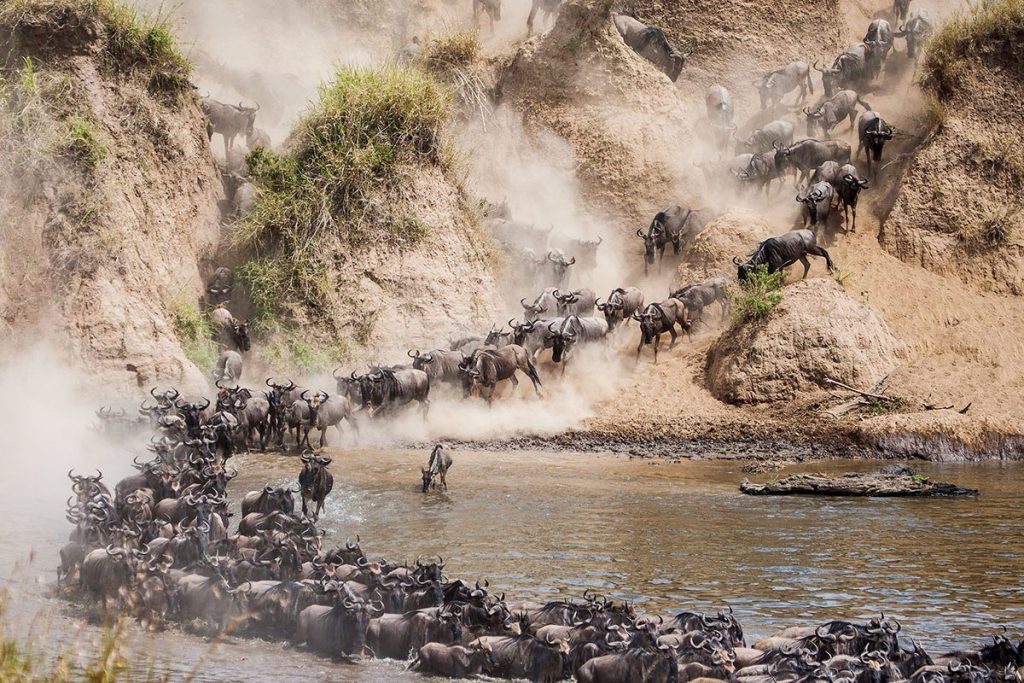Why the Serengeti is Home to the World’s Largest Mammal Population




The Serengeti mammals are a cornerstone of the park’s reputation as one of the most biodiverse and awe-inspiring ecosystems on Earth. Serengeti National Park is not only famous for the Great Migration but also for its extraordinary mammal diversity, boasting the largest population of mammals in the world. This unmatched abundance stems from a combination of ideal climatic conditions, diverse habitats, and meticulous conservation efforts.
Serengeti Mammals: An Overview
The Serengeti ecosystem is home to over 70 species of large mammals and hundreds of smaller ones. From the iconic Big Five to elusive nocturnal species, the Serengeti offers a glimpse into the world of mammals thriving in their natural environment.
Mammal Highlights in the Serengeti
- Herbivores: Wildebeests, zebras, elephants, and giraffes dominate the landscape.
- Carnivores: Lions, cheetahs, and leopards are top predators.
- Rare Species: Black rhinos, African wild dogs, and aardwolves are among the rarer mammals.
- Smaller Mammals: Hyraxes, mongooses, and porcupines add to the Serengeti’s mammalian diversity.
Factors Contributing to the Abundance of Serengeti Mammals
1. Diverse Ecosystems
The Serengeti’s varied landscapes provide unique habitats for a wide range of mammals.
- Grasslands: Perfect for grazing animals like wildebeests and zebras.
- Woodlands: Home to elephants, giraffes, and browsing antelope species like dik-diks.
- Kopjes: Shelter predators like lions and leopards and smaller species such as hyraxes.
- Rivers and Waterholes: Attract aquatic mammals like hippos and serve as drinking spots for many others.
2. The Great Migration
The Serengeti hosts the world-famous Great Migration, where over 1.5 million wildebeests, 200,000 zebras, and other herbivores traverse the plains in search of fresh grazing lands.
- This massive movement sustains predator populations and ensures nutrient cycling, benefiting other species.
- The migration also highlights the adaptability and survival strategies of Serengeti mammals.
3. Favorable Climate
The Serengeti’s year-round moderate climate ensures abundant food and water sources, supporting large mammal populations. The region’s wet and dry seasons create a dynamic ecosystem that sustains both grazers and predators.
4. Effective Conservation Efforts
The Serengeti is a protected area, with strict anti-poaching measures and wildlife corridors connecting it to other ecosystems like the Ngorongoro Conservation Area. These efforts ensure the survival of vulnerable mammal species.
Iconic Serengeti Mammals
Wildebeests and Zebras
- Wildebeests are the most populous mammal in the Serengeti, forming the backbone of the ecosystem.
- Zebras often accompany them during the migration, providing mutual protection from predators.
Lions
- Known as the “king of the jungle,” lions thrive in the Serengeti, with the park hosting one of the largest lion populations in Africa.
- They are often seen hunting during the migration or resting on kopjes.
Elephants
- The gentle giants of the Serengeti can often be spotted in family herds roaming the woodlands and grasslands.
Cheetahs and Leopards
- Cheetahs, the fastest land animals, are frequently found on the open plains, stalking their prey.
- Leopards, on the other hand, are more elusive, often resting in trees or hiding in dense vegetation.
Hyenas
- Spotted hyenas are key scavengers but are also efficient hunters, playing an essential role in maintaining the balance of the Serengeti’s ecosystem.
Black Rhinos
- A symbol of conservation success, black rhinos are now recovering in the Serengeti due to anti-poaching efforts.
Giraffes
- The world’s tallest mammals, giraffes, are a Serengeti staple, easily recognizable by their graceful movement and long necks.
Interdependence Among Serengeti Mammals
The Serengeti ecosystem thrives on the delicate balance of relationships among its mammal species:
- Predator-Prey Dynamics: Predators like lions and cheetahs rely on herbivores such as gazelles and zebras for survival.
- Grazers and Browsers: Herbivores like elephants and wildebeests maintain vegetation balance, which supports smaller mammals and birds.
- Scavengers: Hyenas and vultures clean up carcasses, preventing disease outbreaks.
Threats to Serengeti Mammals
Despite its abundance, the Serengeti’s mammals face several challenges:
- Poaching: Particularly targeting elephants for ivory and rhinos for their horns.
- Human Encroachment: Expanding agriculture and settlements reduce available habitats.
- Climate Change: Altered rainfall patterns threaten water sources and grazing lands.
- Human-Wildlife Conflict: Competition for resources between humans and wildlife can lead to fatalities on both sides.
Conservation Efforts
Anti-Poaching Measures
- Regular patrols and technology like GPS tracking help combat illegal hunting.
Wildlife Corridors
- Connecting the Serengeti to other ecosystems allows mammals to migrate freely, ensuring genetic diversity.
Community Involvement
- Local communities are engaged in conservation efforts through eco-tourism and education programs.
Research and Monitoring
- Organizations like the Serengeti Wildlife Research Centre study mammal populations to inform conservation strategies.
Best Times and Places to Observe Serengeti Mammals
Dry Season (June to October)
- Animals congregate around water sources, making them easier to spot.
- Predators are highly active as prey becomes scarce.
Wet Season (November to May)
- The landscape turns lush, supporting calving and nursing of herbivores, particularly in the southern Serengeti.
Key Areas for Mammal Viewing
- Seronera Valley: Known for its year-round predator and herbivore activity.
- Western Corridor: Famous for river crossings during the migration.
- Northern Serengeti: Ideal for viewing the migration and elusive species like leopards.
Why Serengeti Mammals Matter
The Serengeti’s mammals are not only a vital part of its ecosystem but also a source of inspiration for global conservation. They contribute to the park’s ecological balance, cultural significance, and economic importance through tourism. Safeguarding these mammals ensures that future generations can witness the magic of the Serengeti.
Conclusion
The Serengeti mammals represent the pinnacle of biodiversity, showcasing nature’s resilience and interconnectedness. From the thundering herds of the Great Migration to the stealth of leopards in the trees, every mammal contributes to the Serengeti’s allure. Protecting this incredible mammal population is crucial to preserving one of the world’s last great wildernesses.

One Comment